
A Collection of the Most Iconic Painted Ceilings of All Time
Summary
Reflection Questions
Journal Prompt
From the awe-inspiring frescoes of the Renaissance to the intricate designs of ancient Asian temples, painted ceilings not only showcase the pinnacle of artistic achievement but also reflect the cultural and historical contexts of their times. This collection highlights some of the most iconic painted ceilings from around the world—celebrating the creativity, skill, and vision of the artists who brought these masterpieces to life. Whether it’s the celestial grandeur of Michelangelo’s Sistine Chapel or the vibrant storytelling of the Ajanta Caves, each of these ceilings is an absolute marvel.
Sistine Chapel Ceiling by Michelangelo
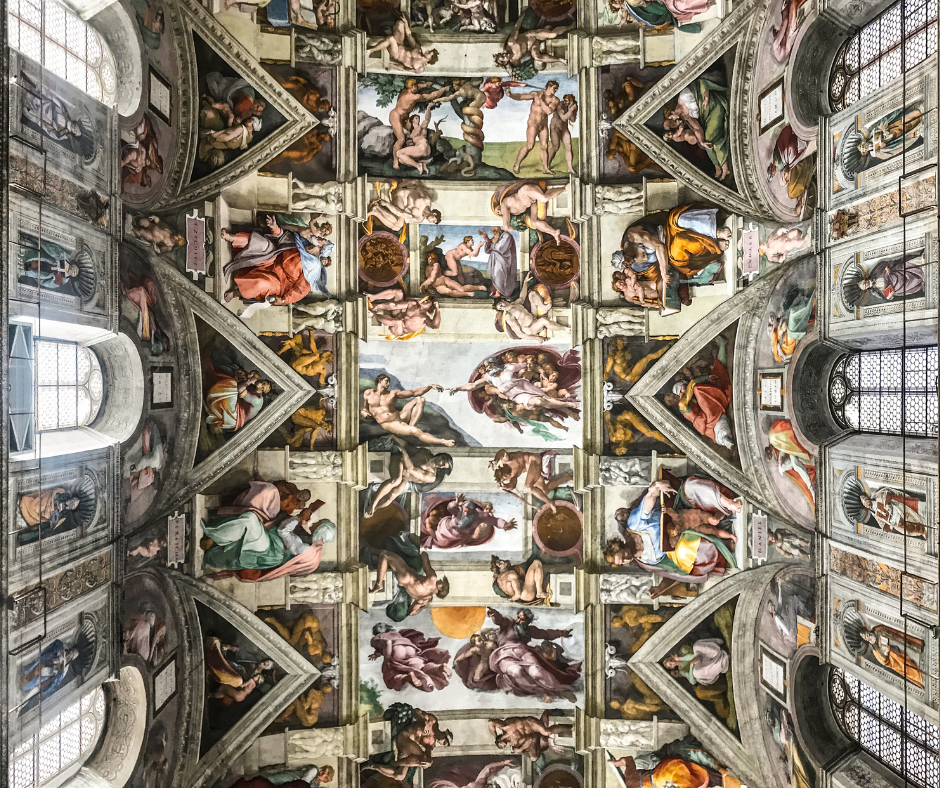
Location: Vatican City
Completed: 1512
Michelangelo’s Sistine Chapel Ceiling is one of the most impressive artistic achievements of the Renaissance. Spanning over 500 square meters, the frescoes depict nine scenes from the Book of Genesis, with the “Creation of Adam” being the most iconic. The ceiling’s intricate details and vibrant colors showcase Michelangelo’s masterful technique and profound understanding of human anatomy. Each panel narrates a biblical story, intricately connected to form a grand theological and visual narrative. The ceiling’s grandeur and complexity make it a pivotal piece of art history, attracting millions of visitors annually.
Palace of Versailles, Hall of Mirrors by Charles Le Brun
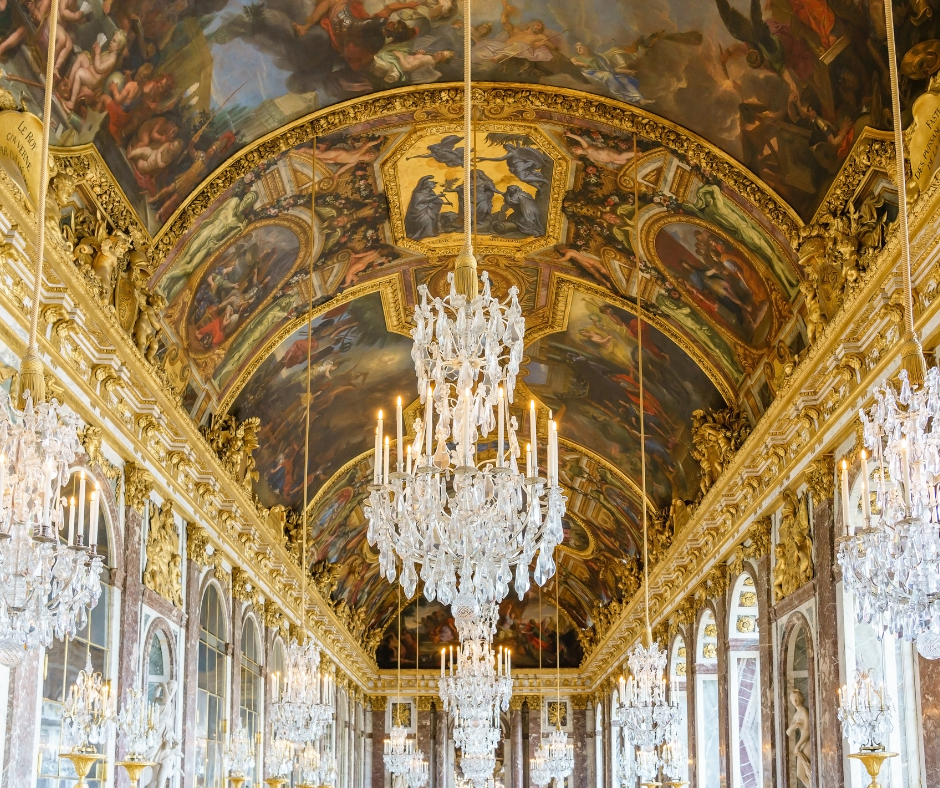
Location: Versailles, France
Completed: 1684
The Hall of Mirrors in the Palace of Versailles, designed by Charles Le Brun, epitomizes the opulence of the French Baroque period. The ceiling paintings glorify the political achievements of King Louis XIV, depicting scenes of his military victories and triumphs. Le Brun’s elaborate compositions and use of vivid colors enhance the grandeur of the hall, reflecting the Sun King’s absolute power. The Hall of Mirrors served as a passageway and a venue for ceremonies, embodying the extravagance and artistic prowess of 17th-century France.
The Triumph of the Name of Jesus by Giovanni Battista Gaulli

Location: Church of the Gesù, Rome, Italy
Completed: 1679
Giovanni Battista Gaulli’s “The Triumph of the Name of Jesus” is a quintessential Baroque masterpiece located in the Church of the Gesù. The fresco creates a dramatic illusion of the ceiling opening to the heavens, with angels and saints swirling around the radiant monogram of Jesus. The dynamic composition and use of light and shadow amplify the sense of divine glory and spiritual transcendence. Gaulli’s work represents the theatrical and emotional intensity characteristic of Baroque art, drawing the viewer’s gaze upwards towards the celestial realm.
Fuel your creative fire & be a part of a supportive community that values how you love to live.
subscribe to our newsletter
*please check your Spam folder for the latest DesignDash Magazine issue immediately after subscription

The Painted Caves of Ajanta

Location: Maharashtra, India
Period: 2nd century BCE to about 480 CE
The Ajanta Caves are a series of rock-cut caves renowned for their magnificent murals and ceiling paintings, depicting the life of Buddha and various Jataka tales. The vibrant colors and intricate details demonstrate the artistic excellence of ancient Indian craftsmen. These paintings reflect the religious and cultural milieu of their time, illustrating themes of compassion, enlightenment, and morality. The Ajanta murals are celebrated for their expressive human figures, fluid lines, and harmonious compositions, offering invaluable insights into early Buddhist art and narrative traditions.
The Dragon and Clouds Ceiling at Kennin-ji Temple
Location: Kyoto, Japan
Completed: 2002 (based on traditional styles)
The ceiling of Kennin-ji Temple in Kyoto features a dramatic painting of twin dragons amidst swirling clouds, created by contemporary artist Koizumi Junsaku. Although completed in 2002, the artwork adheres to traditional Japanese techniques and symbolism, merging ancient and modern aesthetics. The dragons, representing guardians of Buddhist law, exude a powerful and mystical presence, their fluid forms intertwining seamlessly with the dynamic clouds. This ceiling painting embodies the spiritual and artistic heritage of Zen Buddhism, offering a mesmerizing visual experience.
Thanjavur Brihadeeswarar Temple Ceilings

Location: Tamil Nadu, India
Period: 11th century CE
The ceilings of the Brihadeeswarar Temple in Thanjavur are adorned with intricate frescoes depicting Hindu deities, celestial beings, and mythological scenes. These paintings showcase the artistic brilliance of the Chola dynasty, characterized by their elaborate detailing and vibrant palette. The frescoes illustrate various episodes from Hindu mythology, reflecting the religious devotion and cultural sophistication of the period. The temple’s artistic heritage continues to inspire awe, representing a pinnacle of South Indian temple architecture and painting.
Wat Phra Kaew (Temple of the Emerald Buddha)
Location: Bangkok, Thailand
Period: 18th century CE
The ceilings of Wat Phra Kaew, the Temple of the Emerald Buddha in Bangkok, are richly decorated with intricate patterns, mythological scenes, and images of celestial beings. These decorations reflect traditional Thai art and religious symbolism, embodying the spiritual and cultural essence of Thailand. The detailed and vibrant paintings enhance the temple’s sacred atmosphere, illustrating Buddhist cosmology and the pantheon of Thai deities. Wat Phra Kaew stands as a masterpiece of Thai craftsmanship, attracting devotees and tourists with its exquisite artistry.
Dome of Shah Mosque
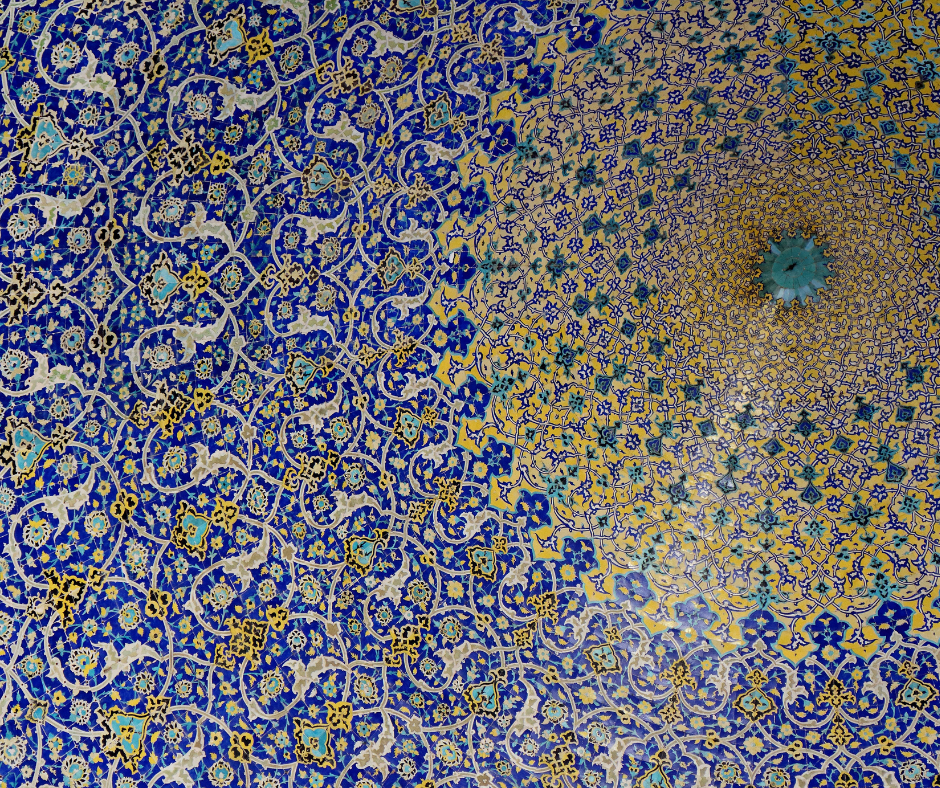
Location: Isfahan, Iran
Completed: 1629
The dome of the Shah Mosque in Isfahan is renowned for its stunning blue and turquoise tile work, forming intricate geometric patterns and calligraphy. The designs reflect the sophisticated artistry of Safavid-era Persia, showcasing the skill and creativity of Persian craftsmen. The vibrant tiles and harmonious compositions create a mesmerizing visual effect, embodying the spiritual and aesthetic values of Islamic art. The Shah Mosque remains a symbol of Persian architectural and artistic excellence, admired for its beauty and precision.
Palazzo Colonna, Galleria Colonna Ceiling by Giovanni Coli and Filippo Gherardi
Location: Rome, Italy
Completed: 1675
The Galleria Colonna in Palazzo Colonna features a grand ceiling adorned with elaborate Baroque frescoes by Giovanni Coli and Filippo Gherardi. The paintings depict the Battle of Lepanto and the Colonna family’s victories, filled with vibrant colors and dynamic compositions. The frescoes celebrate the family’s historical achievements, blending mythological and historical elements. The grandiosity and intricacy of the ceiling reflect the opulence of the Baroque era, making the Galleria Colonna a remarkable example of period art and architecture.
The Painted Ceiling of Gyeongbokgung Palace
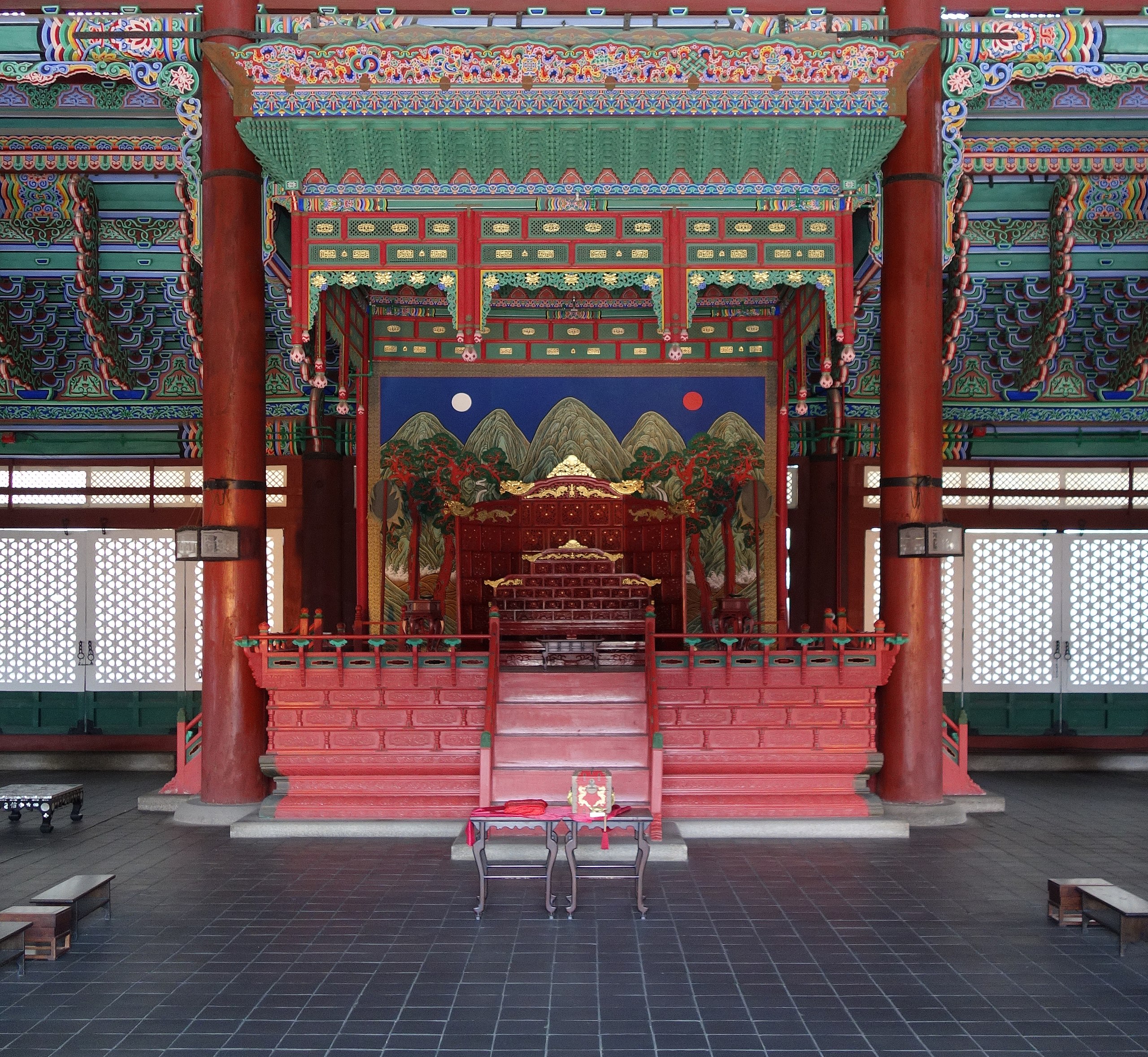
Location: Seoul, South Korea
Period: 14th century CE (rebuilt in the 19th century)
The caisson ceiling of the Five Dragons Pavilion at Beihai Park in Beijing is a stunning example of Qing dynasty artistry. The ceiling features intricately painted dragon motifs, symbolizing imperial power and celestial harmony. The central coiling dragon is surrounded by detailed patterns and vibrant colors, creating a dynamic and auspicious visual effect. This decorative technique, known as caisson, enhances the pavilion’s architectural beauty, embodying the cultural and artistic excellence of the Qing era. The pavilion and its ceiling remain a significant cultural landmark, reflecting the grandeur of Chinese imperial design.
Ali Qapu Palace
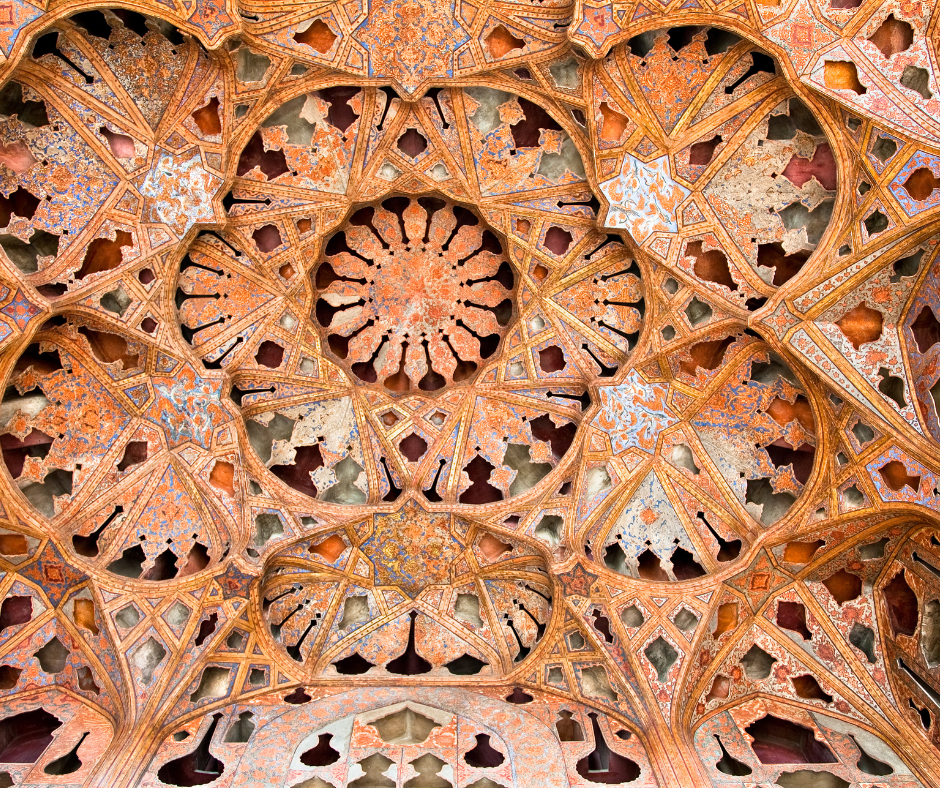
Location: Isfahan, Iran
Completed: Early 17th century
The Music Room of Ali Qapu Palace in Isfahan features a ceiling adorned with intricate stucco work and painted patterns that showcase the lavish decorative style of the Safavid period. The delicate designs and vibrant colors create a harmonious and visually stunning effect, enhancing the acoustics of the room. The ceiling’s artistry reflects the sophistication and cultural achievements of the Safavid era, making the Ali Qapu Palace a key example of Persian architectural and artistic excellence.
The Allegory of Divine Providence and Barberini Power by Pietro da Cortona
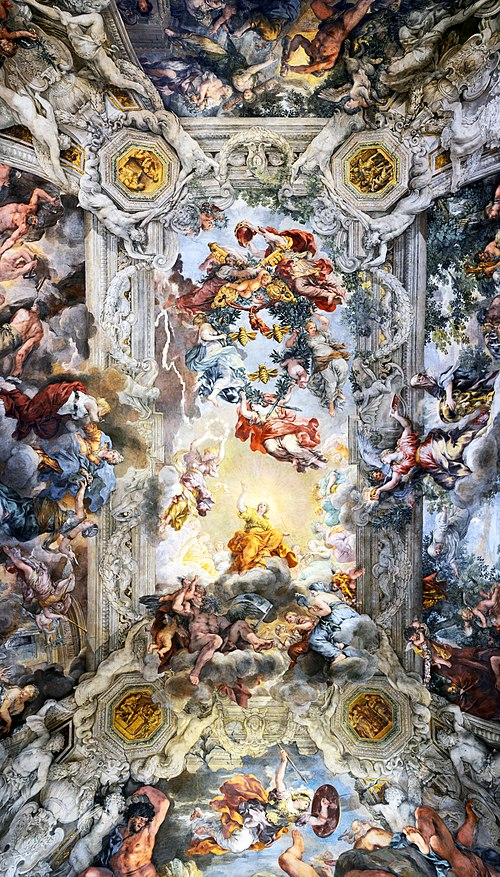
Location: Palazzo Barberini, Rome, Italy
Completed: 1639
Pietro da Cortona’s “The Allegory of Divine Providence and Barberini Power” adorns the ceiling of Palazzo Barberini. This opulent Baroque painting glorifies the Barberini family, featuring allegorical figures and rich symbolism. The central figure of Divine Providence is surrounded by personifications of virtues and celestial beings, all rendered with dramatic lighting and dynamic composition. The fresco celebrates the family’s prominence and influence, embodying the grandeur and theatricality of Baroque art.
The Assumption of the Virgin by Correggio

Location: Parma Cathedral, Parma, Italy
Completed: 1530
Correggio’s “The Assumption of the Virgin” is a Renaissance masterpiece that creates a sense of heavenly ascent within Parma Cathedral. The fresco depicts the Virgin Mary being assumed into heaven amidst swirling clouds and a host of angels. Correggio’s innovative use of perspective and light creates an illusion of depth and movement, drawing the viewer’s gaze upward into the celestial realm. The painting’s emotional intensity and technical brilliance make it a pivotal work of Renaissance art.
The Apotheosis of Washington by Constantino Brumidi
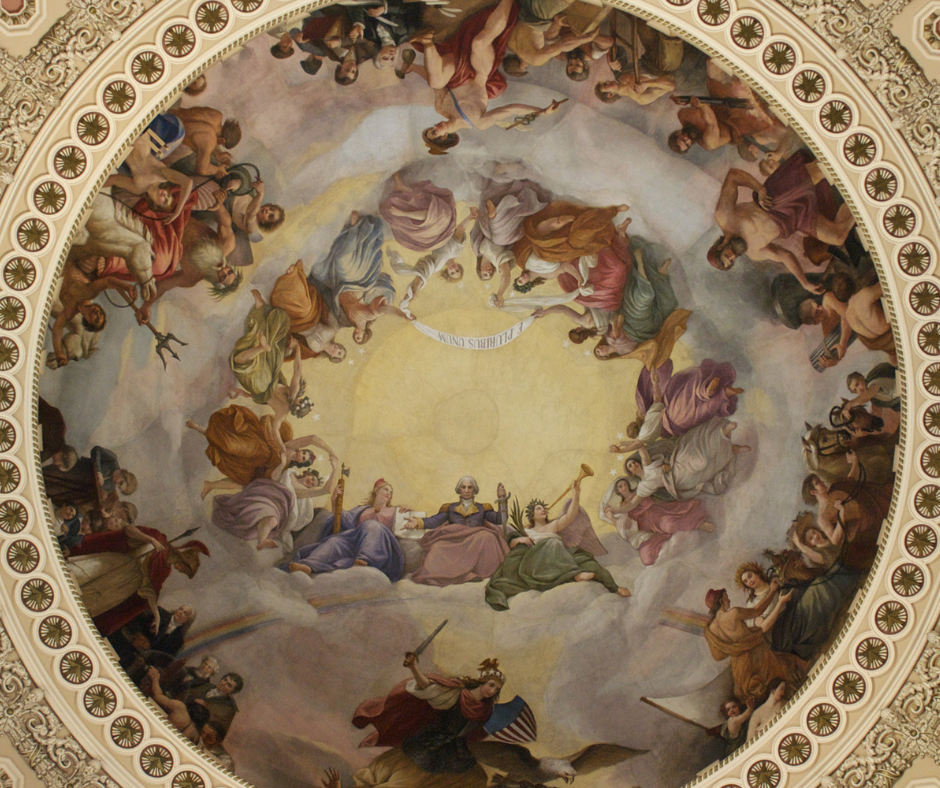
Location: United States Capitol Rotunda, Washington, D.C., USA
Completed: 1865
“The Apotheosis of Washington” by Constantino Brumidi adorns the dome of the United States Capitol. This fresco depicts George Washington ascending to heaven and becoming a god-like figure, surrounded by classical deities and allegorical figures representing national values such as liberty and victory. The artwork reflects the neoclassical style and symbolizes the deification of Washington, reinforcing his status as a founding father and national hero. The fresco’s grandeur and symbolism make it a significant feature of American historical and political iconography.
Final Thoughts
Creating these iconic painted ceilings required not only immense artistic talent but also incredible physical endurance and determination. Artists often worked in challenging conditions, lying on scaffolds for extended periods, craning their necks, and maneuvering in confined spaces to bring their grand visions to life. The sheer scale of these projects and the intricate details involved demanded a high level of precision and stamina.
Despite these arduous conditions, the masterpieces they created continue to awe and inspire us today. These ceilings stand as enduring testaments to human ingenuity and the relentless pursuit of artistic excellence, reminding us of the remarkable achievements that can be realized through dedication and passion. As we gaze up at these magnificent works, we not only appreciate their beauty but also the incredible effort and skill that made them possible.








